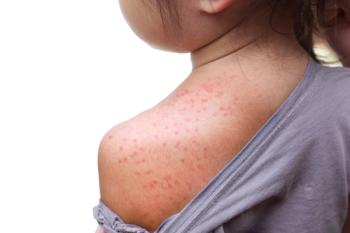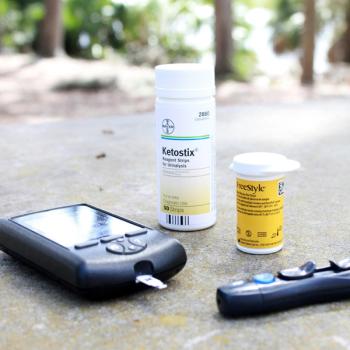
An increase in measles cases, 58 confirmed to the CDC as of March 14, 2024, has prompted the agency to send a health advisory alert to health care providers.

An increase in measles cases, 58 confirmed to the CDC as of March 14, 2024, has prompted the agency to send a health advisory alert to health care providers.

"We cannot lead, innovate, and learn if we do not listen to those we seek to serve. Listening is the foundation of trust and trust is the foundation of every therapeutic alliance."

Administration of the HIV-1 specific, non-nucleoside reverse transcriptase inhibitor (NNRTI) to the indicated population can be done via 25 mg oral tablets or new 2.5 mg oral tablets, developed to help administration and weight-adjusted dosing for children.

What genetic red flags are associated with congenital heart disease? Jennifer Joiner, MSN, CPNP-AC/PC, joined Contemporary Pediatrics at the 45th NAPNAP National Conference to discuss the answer.

A discussion regarding current substance use trends for youth in the United States.

Experts highlight the importance of mental health screening at well-child visits.

Online orders began this week for the first over the over-the-counter contraceptive, Opill (norgestrel; Perrigo).

Traci Gonzales, MSN, APRN, CPNP-PC, explains her session presented at the 2024 NAPNAP National Conference, highlighting the ability to diagnose and manage uncommon causes of chronic respiratory symptoms.

Integrated data from a continuous glucose monitoring device (CGM) and an insulin pump to automate insulin delivery allow AID systems to manage patient blood sugar levels more "effectively," according to Sequel.

The decision makes atidarsagene autotemcel the first FDA-approved gene therapy for MLD, a rare genetic disease that affects the brain and nervous system.

Lara Smith, DNP, APRN, CPNP-AC/PC, provides case-based examples of endocrine emergencies in the pediatric ICU, based on her session presented at the 45th NAPNAP National Conference.

Psychopharmacologic agents used in the pediatric population from the perspective of their interactions with receptor targets in the brain and body.

An intervention applied at family care practices shows benefit to tailoring education to both clinicians and medical assistants.

A novel instructional video tool was shown to effectively inform parents and guardians on fever etiology and care strategies in children being discharged from the pediatric emergency department.

Access to mental health care for youth living in rural areas presents several challenges. Jennifer Marr, DNP, APRN, CNP, PNP-C, explains how a mobile mental health clinic could expand care.

Mothers who are overweight or obese are more likely to breastfeed for shorter durations or not breastfeed at all when compared to mothers of normal weight, according to new research presented in a poster session at the NAPNAP 2024 National Conference on Pediatric Health Care in Denver, Colorado.

The Tennessee STAT tool was associated with improved primary care provider perspective and confidence to lead, rather than refer, on pediatric autism diagnosis.

Tracie W. Kirkland, PhD, DNP, ANP-BC, PPCPNP, CPNP-BC, highlights the importance of awareness to the benefits of breastfeeding, and ways to rethink equitable breastfeeding using patient-centered care.

Tracie W. Kirkland, PhD, DNP, ANP-BC, PPCPNP, CPNP-BC, shares why she looks forward to networking at the 2024 NAPNAP National Conference on Pediatric Health Care, taking place from March 13-16, 2024, in Denver, Colorado.

Investigators observe determinable and likely harmful levels of metabolite on children exposed to their parents' secondhand e-cigarette vapors.


A qualitative analysis shows adolescents and their parents more frequently report an unreadiness to transition from pediatric to adult type 1 diabetes care.

Donna Hallas, PhD, CPNP, PPCNP-BC, PMHS, FAANP, FAAN, shares her thoughts and excitement for the 2024 NANAP National Conference on Pediatric Health Care, taking place in Denver, Colorado, from March 13-16, 2024.


In 2021, pediatric mental health conditions were associated with $31 billion in child spending and $59 billion in household spending, which made up 46.6% of all pediatric medical spending that year.

The approval is based on data from a phase 3, multicenter, randomized trial that evaluated patients aged 8 to 17 years with HeFH who had LDL-C levels of 130 mg / dL or greater who were being treated with lipid-lowering medications.

What is the best way to bring up this often-sensitive topic so that children and caregivers can work together for optimal health outcomes?

Research has demonstrated that SGDY exhibit significantly elevated incidence of mental health diagnoses and conditions compared with their counterparts, including higher rates of suicidality, depressive and anxiety disorders, and substance misuse.

Understand how to naviate the current shortage of pediatric ADHD medications.

In the study period and among individuals aged 12 to 24 years, mental health-associated visits increased nearly 2-fold from 2006 to 2019.